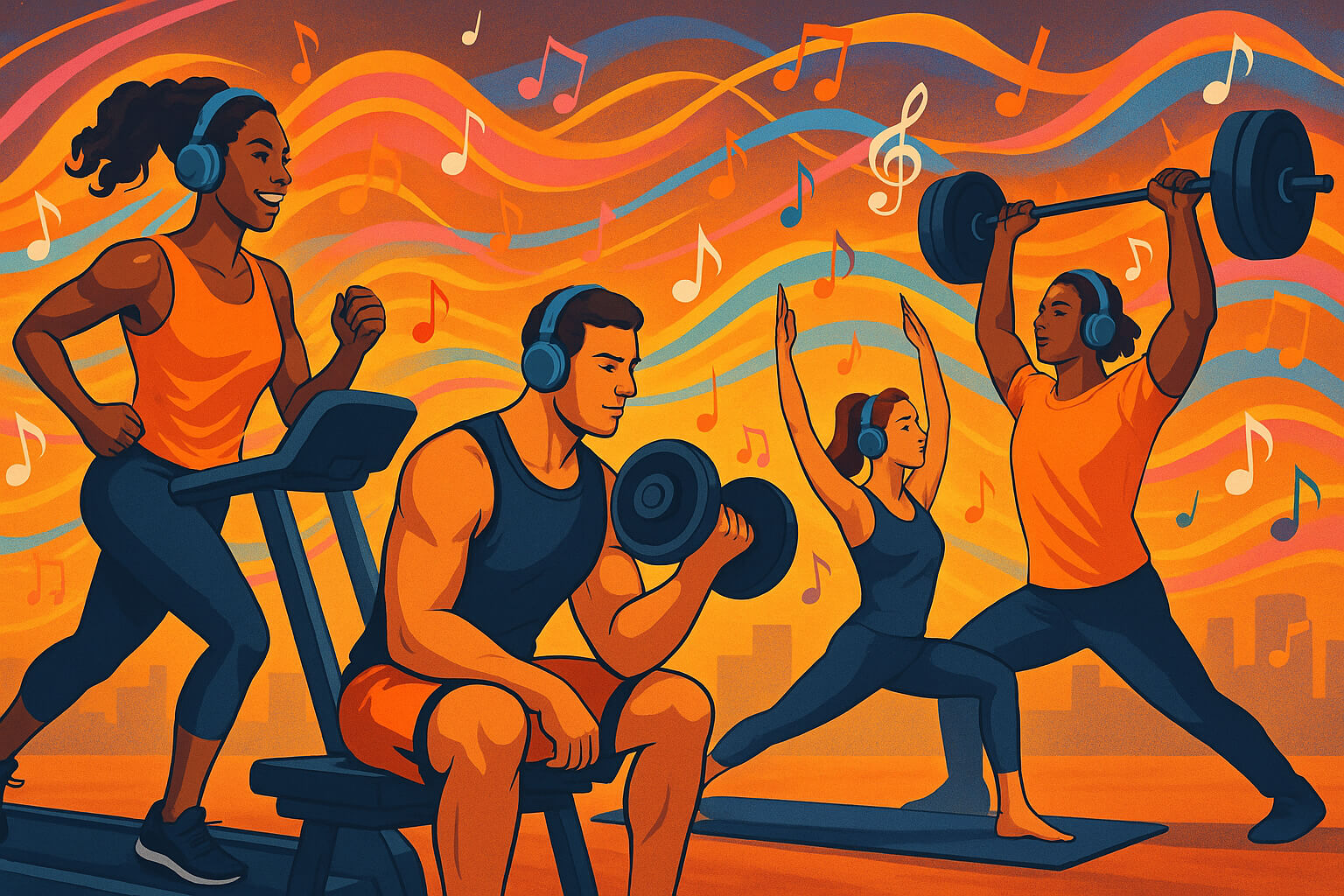August 01, 2025

Ever noticed how your energy suddenly spikes when your favorite pump-up track kicks in during a workout? That’s not just a mood shift—it’s science in action. Music is a powerful performance enhancer. It can increase endurance, elevate mood, improve coordination, and even reduce perceived effort during physical activity.
From casual gym-goers to Olympic athletes, people across the fitness spectrum rely on music as a secret weapon to stay motivated, focused, and in rhythm. But why does it work so well?
Let’s dive into the science and psychology behind using music to take your workouts to the next level.
The tempo and rhythm of a track naturally influence how your body moves. This phenomenon, known as rhythmic entrainment, means your body tends to sync to the beat—whether you’re running, cycling, or lifting weights.
Matching your movement to the beat can help you maintain form, reduce variability, and even conserve energy by improving biomechanical efficiency.
Workout music acts as a mental distraction, allowing you to push through discomfort, boredom, or fatigue. This process, known as dissociation, shifts your attention away from physical sensations like soreness or breathlessness.
Studies show that listening to engaging music during workouts can:
This is especially helpful for repetitive activities like running, rowing, or cycling.
Music stimulates the brain’s reward and pleasure centers, triggering a release of dopamine—the “feel-good” neurotransmitter. Certain lyrics, melodies, or memories associated with songs can give you a mental push when you need it most.
This emotional uplift is critical for:
Explore More: The Psychological Benefits of Playing a Musical Instrument
Science aside, music is deeply personal. Songs that you emotionally connect with—whether it’s nostalgia, motivation, or mood—can be even more powerful than BPM-matched playlists.
Incorporate:
This emotional connection can ignite internal motivation and help you break mental barriers during tough workouts.
Numerous studies have shown strong links between music and improved athletic performance:
Even music’s predictability and familiarity can contribute to smoother motor control and sustained attention during exercise.
Learn more: Music for Stress Relief — Beyond Just Relaxation Playlists
Here are 5 actionable tips to maximize the power of music in your workouts:
Stay up to date with the latest tips, expert insights, product reviews, and step-by-step guides to help you grow, create, and succeed—no matter your industry or passion.